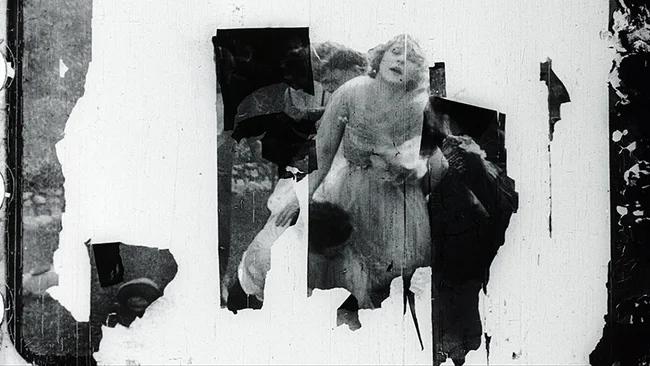One of contemporary cinema’s most passionate archeologists, filmmaker Bill Morrison digs through rare archival material and decaying film stock to exhume the remains of cultural memory. From the visually abstract meditations on mortality in Decasia (2002) to the haunting exploration of a historic natural disaster in The Great Flood (2012), his found-footage films are anchored by an abiding fascination with the ephemerality of physical media and the beauty of its disintegration. In addition to its focus on the tactility of film, his work is infused with the influences of other art forms, including painting, which he studied in college, and music, which features prominently in his collaborations with celebrated composers such as John Adams, Jóhann Jóhannsson, and Steve Reich. His latest documentary, Dawson City: Frozen Time, is the perfect pairing of subject and artist, giving him the chance to explore the ghostlike qualities of cinema through the story of a small town in Canada’s Yukon Territory, where five hundred lost reels of nitrate film were buried in permafrost in a swimming pool. Set to the music of composer Alex Somers, the film uses these excavated artifacts—which include newsreels, silent films, and photographs—to examine how the town’s evolution intersects with larger forces in twentieth-century history.
Just before the theatrical premiere of Dawson City: Frozen Time at New York’s IFC Center, Morrison stopped by to chat about his archival obsessions and the process of bringing this story to the screen.

